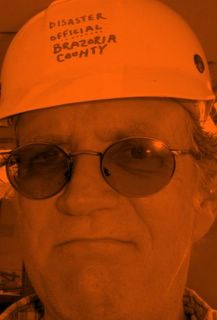TCEQ's EMRS Targets HRVOCs

The Texas Commission on Environmental Quality (TCEQ) today announced a pilot program that will allow the agency and industry to intervene in Houston air pollution events as they are beginning, reducing the frequency, severity, and duration of the events.
The program, called the Environmental Monitoring and Response System (EMRS), will tie together a network of near real-time air pollution monitors in the Houston area. When the network detects conditions that could indicate the start of a pollution event, such as concentrations of highly reactive volatile organic compounds (HRVOCs), EMRS will notify known industry sources in the area, so corrective action can begin immediately. Initially, the pilot program will focus on HRVOCs, which contribute to rapid escalation of ozone.
"We're moving into a system that will enable us to detect fast, then react fast," said TCEQ Commissioner R.B. "Ralph" Marquez. "This represents a tremendous shift in the way this agency responds to situations that might pose a threat to human health and the environment. We hope to be in the position where we can anticipate problems and prevent them before anything serious develops."
Richard Greene, EPA Regional Administrator, said, "Texas is again proving its leadership in environmental management. A successful pilot using established technology to bring new strategies for improving air quality will be an invaluable tool for protecting human health and the environment across the country."
EMRS is a team effort of the TCEQ, industry, city of Houston, Harris County, and the University of Houston - - all entities that operate air monitors in the Houston area. The pilot program is scheduled to begin operation early this month. Plans are to eventually expand the program to other counties, specifically Galveston and Brazoria, where it will work with existing monitoring networks.
The pilot EMRS will utilize seven HRVOC gas-chromatograph monitoring sites that measure data in one-hour increments. HRVOCs monitored include ethylene, propylene, 1,3-butadiene, and butenes.
The TCEQ is planning a similar pilot program to monitor surface water quality and respond quickly to pollution and adverse conditions. The TCEQ already operates eight continuous monitoring stations in waters around the state, and will install more this summer. The water monitoring effort will concentrate on the Bosque and Leon watersheds near Waco, where runoff from commercial dairy operations contributes to drinking water problems downstream.














4 comments:
Dear Banjo,
Dear Banjo,
Is that you in the gas mask? BTW, this "blog" of yours is great. I wish you'd come to work with me at 801 Texas Ave. and work side-by-side with me to help me build the product into Houston's leading information source!
Best wishes,
J. Cohen,
News Empressario
H-Town
Hey Banjo,
Just came by to say hi!
Dont mess with TexASS... (just joshin)
No, that's not me in a gas mask. I don't know who it is. I have an array of gas mask pictures ready for use when this place blows up. That is all.
B.J.
Post a Comment